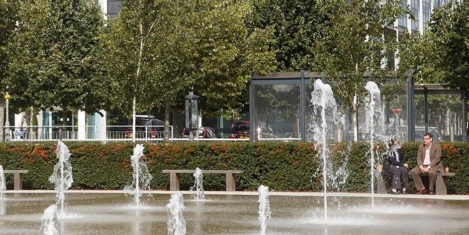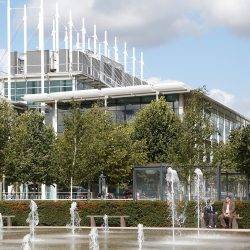April 13, 2017
City of London offers free public access WiFi across whole Square Mile 0
 The City of London Corporation has announced a deal that will deliver a free, public access WiFi network, offering internet access anywhere within the Square Mile. The multi million pound project is one of the largest investments in wireless infrastructure ever seen in London. Cornerstone Telecommunications Infrastructure Ltd (CTIL) has been awarded a major 15-year contract to roll-out and manage the City of London’s new wireless network in conjunction with O2. The new network will deliver wireless services across all mobile networks for City businesses, residents and visitors.
The City of London Corporation has announced a deal that will deliver a free, public access WiFi network, offering internet access anywhere within the Square Mile. The multi million pound project is one of the largest investments in wireless infrastructure ever seen in London. Cornerstone Telecommunications Infrastructure Ltd (CTIL) has been awarded a major 15-year contract to roll-out and manage the City of London’s new wireless network in conjunction with O2. The new network will deliver wireless services across all mobile networks for City businesses, residents and visitors.












 It is two years since the introduction of Shared Parental Leave (SPL), where couples were given the ability to share leave surrounding the arrival of a new addition to their family; and while sharing leave is seen to have a profound beneficial impact for the family, there are still plenty of barriers. According to
It is two years since the introduction of Shared Parental Leave (SPL), where couples were given the ability to share leave surrounding the arrival of a new addition to their family; and while sharing leave is seen to have a profound beneficial impact for the family, there are still plenty of barriers. According to 






 Today (29 March) the Prime Minister triggers Article 50 to begin the UK’s exit from the European Union, and a new piece of research claims that almost two thirds (62 percent) of HR professionals expect this to impact their HR strategy and more worryingly, over a third (35 percent) say that the leave vote will impact the profits of their business. According to the research from employee benefits specialist Secondsight, 37 percent have opted not to hire over the coming year, and 39 percent agreed that recruiting the right people into their business will now be more difficult than before the decision to leave was made. However, on a more encouraging note, 95 percent of the HR professionals surveyed will see their budget rise in 2017, and 18 percent plan to introduce new benefits in the year ahead.
Today (29 March) the Prime Minister triggers Article 50 to begin the UK’s exit from the European Union, and a new piece of research claims that almost two thirds (62 percent) of HR professionals expect this to impact their HR strategy and more worryingly, over a third (35 percent) say that the leave vote will impact the profits of their business. According to the research from employee benefits specialist Secondsight, 37 percent have opted not to hire over the coming year, and 39 percent agreed that recruiting the right people into their business will now be more difficult than before the decision to leave was made. However, on a more encouraging note, 95 percent of the HR professionals surveyed will see their budget rise in 2017, and 18 percent plan to introduce new benefits in the year ahead.


 Accommodation and food services, manufacturing, and transport industries will be hardest hit by limits on movement of EU and non-EU workers following Brexit, a new report has claimed. The latest edition of Mercer’s
Accommodation and food services, manufacturing, and transport industries will be hardest hit by limits on movement of EU and non-EU workers following Brexit, a new report has claimed. The latest edition of Mercer’s 











